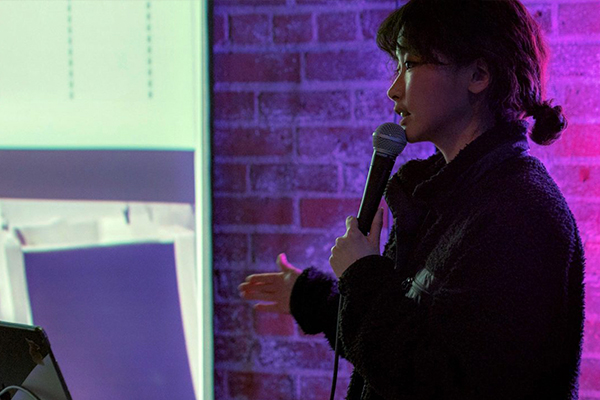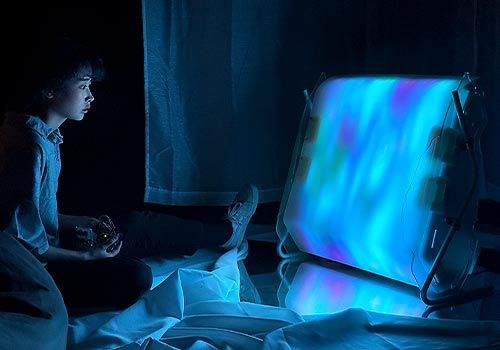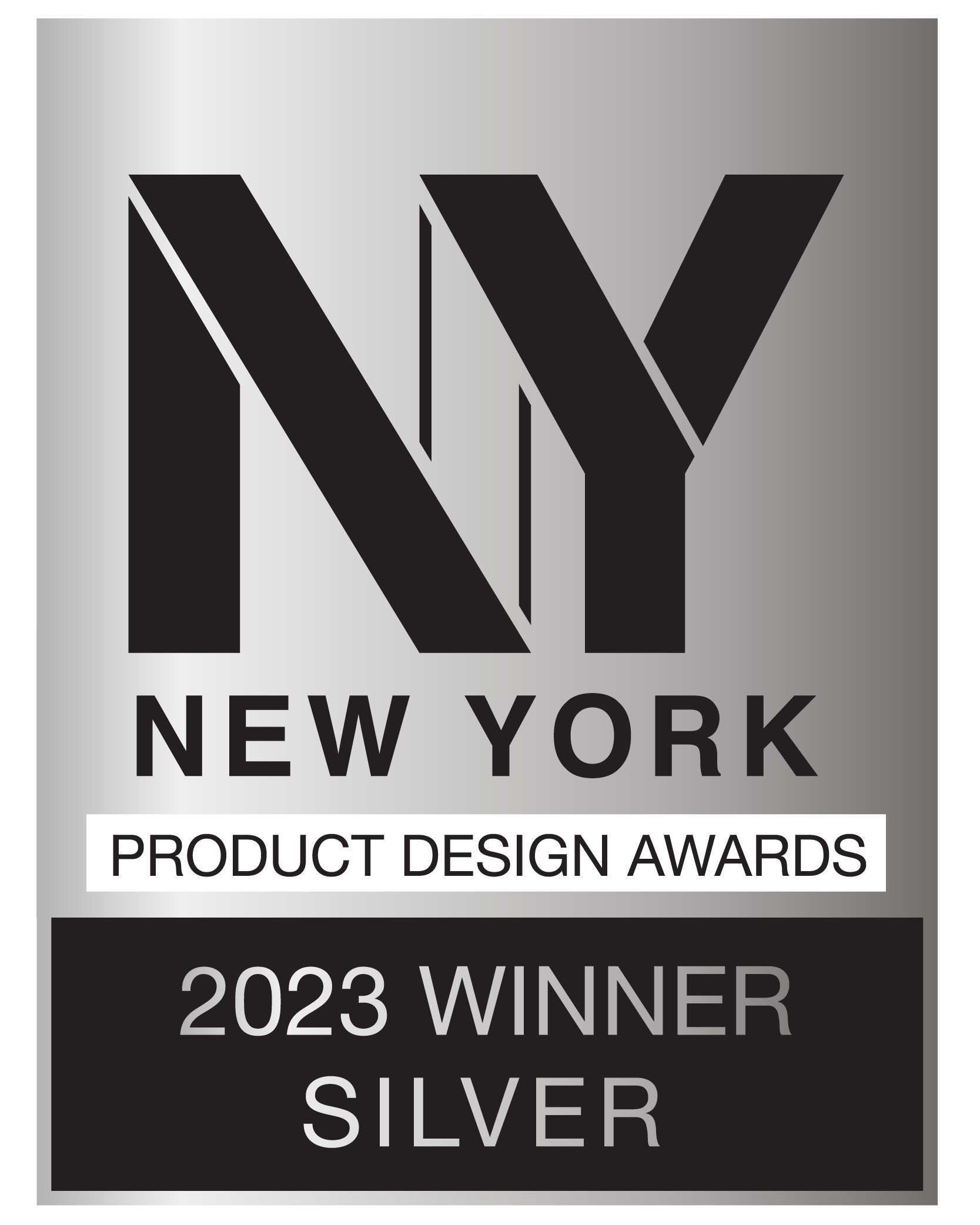
Reina Mun
1. Please give us a brief bio of yourself and your background.
My name is Reina Mun, and I am an interdisciplinary designer, artist, and technologist born in South Korea and raised in Hong Kong. I am currently completing my postgraduate studies at the Massachusetts Institute of Technology. Prior to this, I studied architecture and design at the AA School of Architecture in London. My practice revolves around creating physical mediums that blur the boundaries between design and art and the interplay between the scale of architecture and objects. Through design and art research, I place queries in objecthood and cultivating intimacy and empathy. I am interested in how design can address the challenges of living in a fast-paced world driven by rapid technological advancements and an obsession with efficiency and smart technology.
2. What made you become/why did you choose to become a product designer?
While I wouldn't necessarily classify myself as a traditional product designer, I've always been fascinated by the ways in which design can be used to create objects that are not only functional but also evoke emotions and connect people on a personal level. For me, the user experience is paramount, and I'm constantly striving to create designs that resonate with people on an emotional and interpersonal level. By constructing experiences through design, I aim to create objects and spaces that not only serve a practical purpose but also engage people on a deeper level. This approach has been a driving force in my creative practice, and I'm committed to exploring the potential of design to foster empathy and intimacy in our increasingly technology-driven world.
3. Tell us more about your business/company, job profile, and what you do.
My work as a designer and artist focuses on creating objects that are not solely utilitarian but entails poetic and artistic narratives. I approach my work through a research-based process that incorporates computational technologies, digital fabrications and speculative design. My work ranges from microarchitectures and furniture to lighting, interactive objects and playful devices.
4. What does “design” mean to you?
Design, to me, encompasses the art and science of creating meaningful and purposeful experiences. It is not limited to just aesthetics or functionality but extends to the social, cultural, and emotional contexts in which it exists. At the core of design is a deep focus on the user and the individual experience. By prioritizing the needs and desires of people, designers can create mediums that resonate emotionally and connect with people on a personal level. In my practice, I like to explore the boundaries between the real and the unreal to create new relationships between the work and its audience. Whether I am designing a space, an interactive installation, or an object, I believe that design can be a powerful tool for fostering empathy, bridging divides, and creating connections between people of different backgrounds and cultures. Ultimately, design is a means of enhancing and enriching people's lives, creating experiences that are both meaningful and resonating.
5. What’s your favorite kind of design and why?
My favorite kind of design is one that puts efforts in engaging people's personal associations and interpersonal layers with the work. I find that designs that establish a deep emotional connection with their users are the most impactful and memorable. I am drawn to designs that possess a timeless quality and can remain relevant and meaningful even as our tastes and preferences evolve. I believe that such designs are able to stand the test of time because they are able to tap into universal human experiences and emotions.
6. To you, what makes a “good” design?
In my view, a good design is one that places a paramount emphasis on enhancing the human experience and forging emotional connections with users. A well-crafted design should possess a thoughtful and meaningful narrative that resonates with people on a human level. Beyond this, a good design should enable people to exercise agency in their interactions with it, allowing for a sense of empowerment and personalization. Moreover, a good design is driven by the needs and desires of its users rather than being solely dictated by aesthetics or fleeting trends.
7. Describe your design style and its main characteristics.
In my design practice, I strive to contrast the inquiries that guide my creative process and the materials I utilize to realize my ideas. My work takes a critical stance toward designs prioritizing capitalist values and technological advancement. Instead, I seek to imbue my creations with a sense of human touch by repurposing recycled industrial materials. While industrial materials are often associated with mass production and speed, I reinterpret their usage to create objects that evoke intimacy and craftsmanship. Central to my design philosophy is interactivity. I prioritize creating works that engage with people in meaningful ways. Rather than adhering strictly to contemporary design trends, I approach my work with a distinct aesthetic sensibility and a focus on experiential narratives. Through this approach, I aim to produce human and resonant objects, evoking a sense of connection and engagement with their users.
8. Tell us about your design process.
I begin my design process by selecting an object that is familiar to us all but then take a departure by reinterpreting the object from the user experience perspective. My approach is based on how the speculated object situates itself in the real world and forms new relationships with its environment, people, and external stimuli. I am also passionate about integrating computational technologies into my design work, aiming to bridge seemingly opposing qualities and bring a sense of humanity to my designs.
9. Congratulations! As the winner of the 2023 NY Product Design Awards, what does it mean to you and your company and team to receive this award distinction?
I feel very humbled to have received the 2023 NY Product Design Awards. Despite the ambiguity in the identity of my works, I am also very grateful and glad that the work is speaking to the people in the fields. This award has been a testament to the importance of interdisciplinary collaborations and how combining diverse skills and perspectives can impact the design field.
10. Can you explain a bit about the winning work you entered into the 2023 NY Product Design Awards, and why you chose to enter this project?
The project that won the 2023 NY Product Design Award is an interactive lighting installation titled 'Luminous Solace'. The reason behind my selection of this project was my aim to introduce a unique mode of interaction between a lighting object and its user, one that could also provide a therapeutic experience in a domestic setting.Luminous Solace is an interactive chromatic light that beckons users to embark on an exploratory journey into the soothing and comforting experience of fidgeting motions with light and colors. The light comes with a peripheral tactile fidgeting device, designed with an assortment of textures and touch-sensitive switches for haptic interactions. The device interacts with the lighting object with convex diffusor, which casts a variety of colorscapes that transform in response to fidgeting motions. Participants can use the tactile switches to toggle between the five colorscape integrated into Luminous Solace.
11. What was the biggest challenge with this project?
One of the primary challenges encountered in this project was creating an intimate and cohesive experience by blending design and technology while effectively integrating the software and hardware elements. The project required careful consideration of technical challenges alongside design choices. A significant amount of time was dedicated to achieving an optimal balance between the software's manifestation of the lighting design and the tangible elements complementing it.
12. Where do you see the evolution of design industry going over the next 5-10 years?
In my opinion, the design industry is headed towards a more multidisciplinary approach. I believe that people are becoming less constrained by defined categories and instead embracing a generalist mindset that allows them to combine and integrate different practices. This shift towards multidisciplinarity will likely result in the expansion of design and its impact on various fields over the next 5-10 years.
13. Who has inspired you in your life and why?
One of the biggest inspirations in my life has been my grandfather, who I unfortunately never had the chance to meet. He was a furniture maker and the only family member who worked in the design field. I am constantly inspired by his work, which was focused on creating furniture for his family and the people in his town. His creations were authentic, warm, and made with care, which has instilled in me a deep appreciation for the intersection of design and functionality. Although I never had the chance to speak with him, his legacy continues to inspire me in my own work and approach to design.

